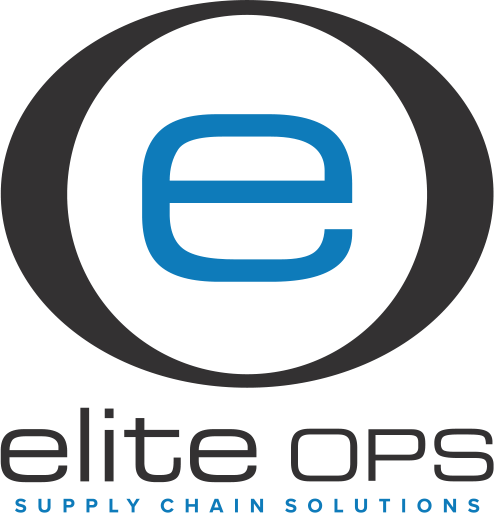Vertical Integration of Supply Chain: Pros and Cons.
Vertical integration in the supply chain refers to a company’s strategy of taking control over multiple stages of production and distribution. This approach can encompass both backward integration, where a company takes control of its suppliers, and forward integration, where it manages distributors or retailers. By doing so, organizations aim to enhance the quality, reduce costs, and improve delivery times.
In today’s competitive business environment, vertical integration has gained significance as companies seek more control over their operations. It allows businesses to better manage risks associated with relying on external suppliers and helps in maintaining consistent quality standards across the supply chain.
In this post, we will explore the pros and cons of vertical integration in supply chain management. Supported by relevant examples from various industries such as automotive, retail, and oil and gas, you will gain insights into how different sectors have leveraged this strategy to their advantage.
Additionally, we will also discuss some key areas that are vital for successful supply chain management:
Freight Shipping Services
An integral part of the supply chain, efficient freight shipping services play a crucial role in ensuring faster delivery times. For all your eCommerce business needs, try out Elite Ops’ freight shipping services in Atlanta & Utah.
eCommerce Supplier Risk Management
With the increasing reliance on eCommerce platforms, effective supplier risk management has become paramount. This article provides insights into best practices for managing risks related to your supply chain.
Technologies Every Distribution Company Needs
In an era driven by technological advancements, distribution companies need to embrace certain technologies to stay competitive. This section highlights three essential technologies that can significantly improve efficiency within your distribution operations.
Warehouse Management Solutions for Improving Business Efficiency
Efficient warehouse management is crucial for streamlining operations and improving overall business efficiency. This segment explores five warehouse management solutions that can help you achieve these goals.
Through a comprehensive understanding of vertical integration and these critical aspects of supply chain management, you will be better equipped to make informed decisions and drive success within your industry.
Related: Warehouse VS Fulfillment Center. Aren’t they the Same?
Pros of Vertical Integration in Supply Chain
Vertical integration in supply chain management offers several compelling benefits for companies looking to optimize their operations. By gaining control over multiple stages of the supply chain, organizations can enhance their overall efficiency, reduce costs, and improve product quality.
1. Improved Quality Control
One significant advantage of vertical integration is improved quality control. When a company manages various stages of production internally, it can enforce stringent quality standards at each step. This reduces the risk of defects and ensures a consistent level of quality across all products.
Examples:
- Automotive Industry: Companies like Tesla manufacture critical components such as batteries and electric drive-trains in-house. This allows them to maintain high-quality standards and innovate rapidly without relying on external suppliers.
- Fashion Industry: Brands like Zara control design, manufacturing, and retail processes. This enables them to maintain consistent quality and quickly adapt to changing fashion trends.
2. Cost Reduction
Vertical integration also helps in reducing production costs. By eliminating the need for external suppliers, companies can avoid markups associated with third-party vendors and streamline their operations.
Key points:
- Economies of Scale: Owning multiple stages of the supply chain allows companies to produce in larger volumes, reducing per-unit costs.
- Reduced Transaction Costs: Internalizing processes minimizes costs related to negotiations, contracts, and logistics with external partners.
Examples:
- Oil and Gas Industry: Companies like ExxonMobil own refineries and distribution networks. This reduces their dependence on external suppliers and lowers transportation costs.
- Retail Sector: Amazon owns its logistics network, including warehouses and delivery services. This vertical integration helps Amazon offer competitive pricing by cutting down shipping expenses.
3. Increased Efficiency
Another notable benefit is increased efficiency within the supply chain. By managing different stages internally, companies can optimize workflows, reduce lead times, and respond faster to market demands.
Examples:
- Automotive Manufacturers: Toyota’s just-in-time production system exemplifies how vertical integration can lead to efficient inventory management and quicker assembly times.
- eCommerce Giants: Companies like Amazon utilize vertically integrated logistics solutions to ensure faster delivery times, enhancing customer satisfaction.
Examples of Successful Vertical Integration
Successful vertical integration strategies are evident across various industries:
- Automotive Industry:
- Tesla’s approach to manufacturing key components in-house ensures high-quality standards and reduces reliance on external suppliers.
- Retail Industry:
- Amazon’s ownership of its logistics network streamlines operations, enabling cost reductions and faster deliveries.
- Oil and Gas Industry:
- ExxonMobil controls its refineries and distribution channels, minimizing dependency on third parties and optimizing operational efficiency.
These examples highlight how vertical integration can be strategically advantageous when aligned with a company’s broader goals.

Cons of Vertical Integration in Supply Chain
Adopting a vertically integrated approach to supply chain management comes with its own set of challenges and potential drawbacks.
High Initial Investment
One of the most significant barriers to implementing vertical integration is the substantial financial resources required. Companies must invest heavily in infrastructure, technology, and human resources to take control of multiple stages of their supply chain. This high initial investment can be particularly daunting for small and medium-sized enterprises (SMEs) that may not have the capital or financing options available to larger corporations.
Example: In the automotive industry, integrating backward by manufacturing critical components such as engines and transmissions requires setting up specialized facilities, acquiring advanced machinery, and hiring skilled labor. These costs can quickly add up, making it challenging for smaller players to compete.
Complexity and Risk
Managing a vertically integrated supply chain introduces a new level of complexity. Companies need to develop new capabilities and expertise in areas outside their core competencies. This includes understanding different production processes, managing logistics networks, and ensuring regulatory compliance across various stages of the supply chain.
Additionally, vertical integration increases exposure to risks such as supply chain disruptions, market volatility, and operational inefficiencies. Any disruption in one part of the integrated process can have a cascading effect on the entire supply chain.
Example: Oil companies that own and operate refineries face significant risks associated with fluctuations in crude oil prices, regulatory changes, and environmental concerns. A disruption in refinery operations due to natural disasters or equipment failure can lead to significant financial losses.
Limited Flexibility
Vertical integration can limit a company’s ability to respond quickly to market changes or adapt to new trends. When a company controls multiple stages of its supply chain, it may find it more challenging to pivot or make rapid adjustments compared to companies that rely on external suppliers or partners. This limited flexibility can hinder innovation and slow down time-to-market for new products.
Example: Fashion companies that have vertically integrated their supply chains by controlling design, manufacturing, and retail sales may struggle to keep up with rapidly changing fashion trends. While vertical integration allows for better control over quality and production timelines, it can also slow down the ability to introduce new styles or respond to shifts in consumer preferences.
Examples of Challenges in Vertical Integration
Several companies have faced challenges or experienced negative outcomes due to vertical integration:
- Automotive Industry: Some manufacturers faced difficulties when they attempted backward integration without adequate expertise or resources. This led to quality issues and production delays.
- Oil and Gas Industry: Oil companies that invested heavily in refining capabilities encountered financial strain during periods of low crude oil prices, affecting their overall profitability.
- Retail Industry: Retailers who adopted forward integration by opening physical stores found it challenging to compete with established e-commerce platforms during the shift towards online shopping.
By understanding these potential drawbacks and challenges associated with vertical integration in supply chain management, organizations can make more informed decisions on whether this strategy aligns with their overall business goals.
Related: Best Practices for Managing Supply Chain Warehousing Processes.
Examples of Vertical Integration in Different Industries
Exploring real-world case studies illustrates how vertical integration strategies have been applied effectively across various industries. Here are some key examples:
Automotive Industry
Automotive manufacturers often implement vertical integration by producing critical components in-house. This strategy ensures stringent quality standards and reduces supply chain disruptions. For instance:
- Toyota manufactures many of its own parts, such as engines and transmissions, which allows the company to maintain high-quality standards and consistent supply.
- Tesla has adopted a vertically integrated approach by producing batteries and electric motors in-house, which not only ensures quality but also accelerates innovation cycles.
Retail Industry
Retail companies leverage vertical integration to gain better control over the customer experience and minimize distribution costs. By opening their own stores or e-commerce platforms, they enhance their market reach and operational efficiency:
- Amazon has vertically integrated by owning its fulfillment centers and delivery network, reducing reliance on third-party logistics providers and improving shipping times.
- Zara, a fashion retailer under Inditex, designs, produces, and sells its clothing through its own stores and online platform. This model enables Zara to quickly adapt to fashion trends and manage inventory efficiently.
Oil and Gas Industry
Oil companies achieve vertical integration by controlling multiple stages of the supply chain, from extraction to distribution. This approach helps them reduce dependence on external suppliers and improve delivery times:
- ExxonMobil owns oil wells, refineries, and gas stations, ensuring a seamless flow from crude oil extraction to consumer sales.
- Shell operates similarly by integrating upstream (exploration) with downstream (refining and distribution) activities, enabling better margin control across the supply chain.
Fashion Companies
Fashion companies integrate vertically to manage design, manufacturing, and retail operations. This strategy allows them to respond swiftly to changing trends and reduce lead times:
- H&M controls various aspects of its production process, from design to retail sales. This integration helps H&M maintain quick turnaround times for new collections.
- Uniqlo, owned by Fast Retailing, manages its supply chain closely by overseeing fabric production through to final retailing steps. This enables efficient inventory management and rapid market response.
Poultry Industry
In the poultry industry, vertical integration encompasses feed production, farming, and processing plants. Companies ensure consistent quality and supply through this integrated approach:
- Tyson Foods controls every stage from breeding chickens to processing meat products. This comprehensive control enhances product consistency and operational efficiency.
- Perdue Farms follows a similar model by managing feed mills, hatcheries, farms, and processing facilities. This vertical integration helps Perdue maintain high-quality standards throughout its supply chain.
These examples highlight how different industries have successfully leveraged vertical integration to optimize their supply chains. By taking ownership of various stages in production and distribution processes, these companies enhance quality control, reduce costs, increase efficiency, and respond swiftly to market demands.

Aligning Vertical Integration with Business Strategy
Importance of Alignment
It’s crucial to align your vertical integration decisions with your overall business strategy. The goal is for vertical integration to strengthen your core competencies and strategic objectives instead of taking away resources from them. To determine if the benefits outweigh the costs in both the short and long term, it’s important to conduct thorough cost-benefit analyses.
Risk Mitigation Strategies
There are several proactive strategies you can implement to mitigate the risks associated with vertical integration:
- Building Strong Partnerships: Establishing strong relationships with key suppliers can serve as a backup plan in case there are any disruptions in your internal operations.
- Maintaining Flexibility: Having a certain level of operational flexibility enables you to quickly adapt to changes in the market. This could mean diversifying your supply chain or continuing to outsource some aspects to maintain agility.
Vertical integration offers significant advantages, but it needs to be carefully aligned with your business strategy in order to be effective.
Related: 4 Benefits of a Streamlined eCommerce Supply Chain.
Bottom Line
Vertical integration can significantly enhance control and efficiency within a supply chain, offering advantages such as improved quality control, cost reduction, and increased efficiency. However, this strategy is not universally applicable. Each business must carefully evaluate whether vertical integration aligns with its unique context and overarching goals.
Supply chain professionals should leverage the insights shared in this article to make informed decisions about vertical integration strategies. Conduct thorough cost-benefit analyses and consider potential risks like high initial investment, complexity, and limited flexibility. Building strong partnerships with key suppliers and maintaining operational flexibility can help mitigate some of these risks.
To further enhance your understanding of supply chain management, you may find the following resources valuable:
- Order Fulfillment and 3PL Pricing Models Explained: Gain insights into the intricacies of order fulfillment and understand various pricing models associated with third-party logistics (3PL).
- Shipping and Reverse Logistics: Elite OPS offers comprehensive shipping solutions along with its expertise in reverse logistics – a vital aspect of any supply chain.
- ABC Inventory Analysis & Management for eCommerce Businesses: Explore how an ABC inventory analysis can optimize inventory management for your eCommerce business.
An external fulfillment service partner like Elite OPS is responsible for picking, packing, and shipping orders. Consider such a strategy to reduce shipping and operational costs.
Elite OPS has been a leader in Shipping and Logistics for over 25 years. Contact Us to find out how we can help you Save Time and Money on Procurement as a Service, eCommerce Order Fulfillment, and Kitting and Assembly.
Call 855-553-5490 or Click Here to Request a Quote!








